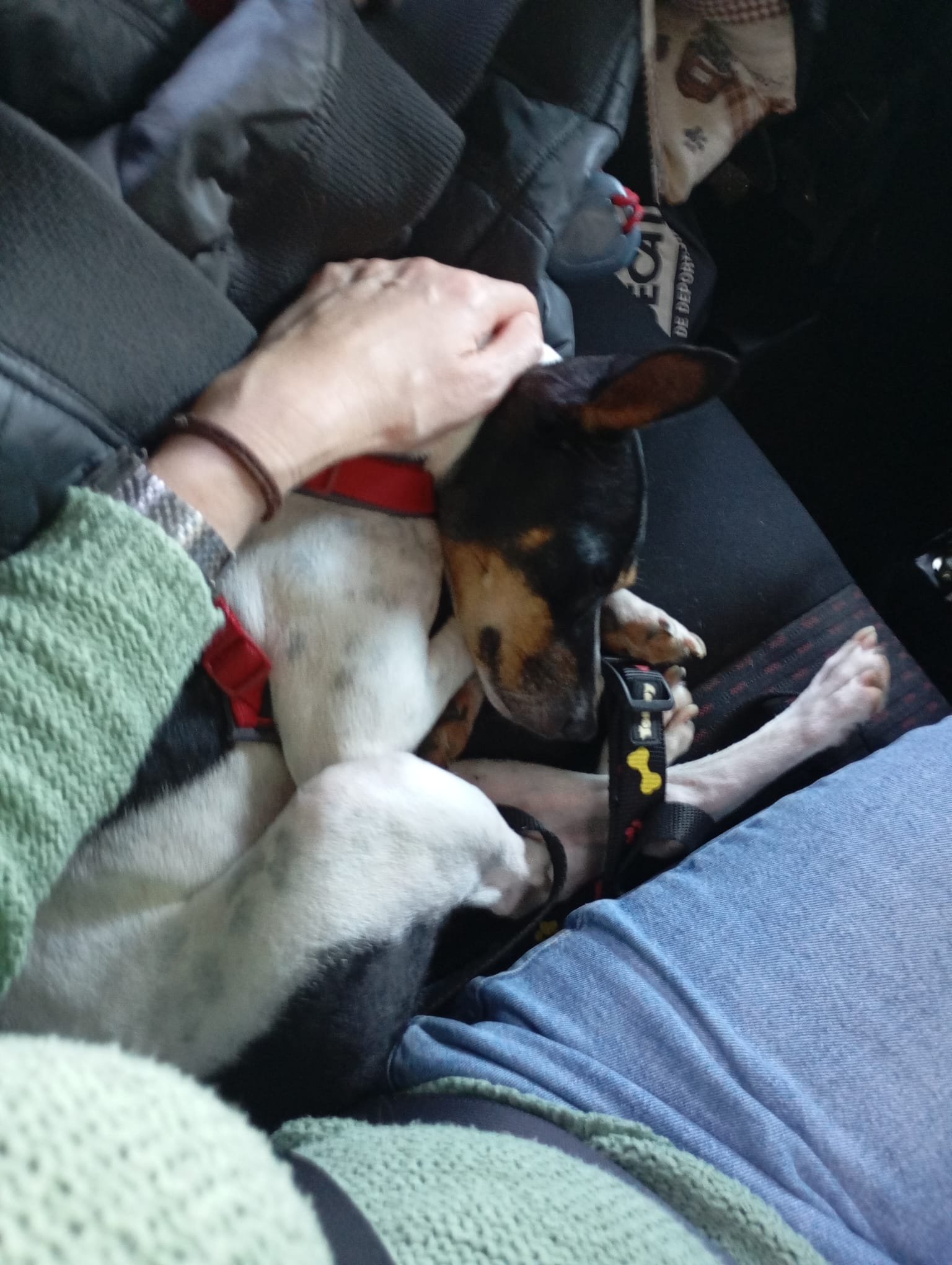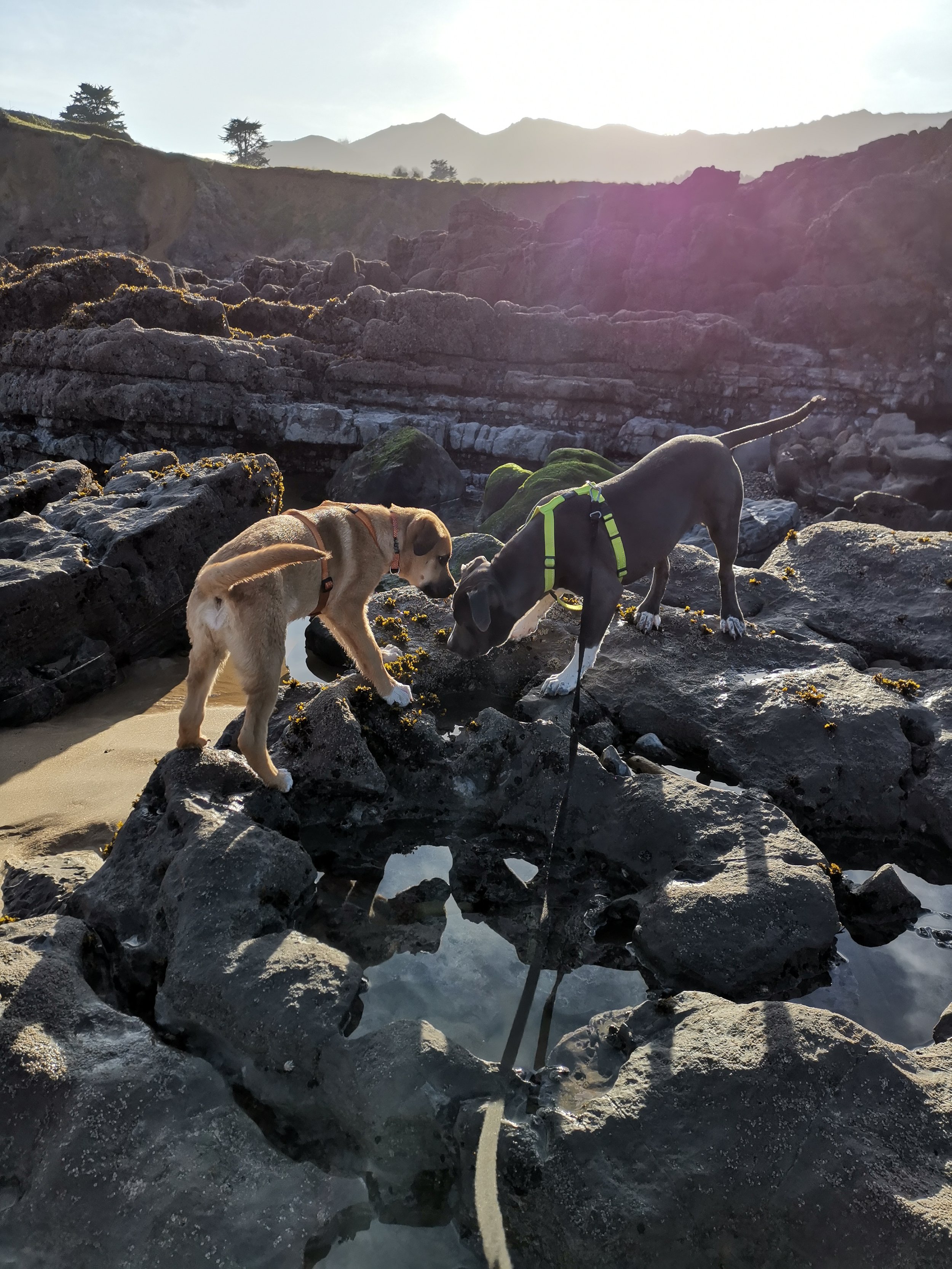Blog
Click on the category to see related posts below:

Are you stuck in a conflict with your dog?
Not every walk with our dog is an idyllic Smiling Leash walk. We are two different individuals, and our ideas, opinions, and desires do not always match. Conflicts happen, in this article learn how to deal with them.

Holy Cow!
Experience, genetics and even the environment can affect how are dogs responds to cows and other animals. Explore with us the reasons and how a long smiling leash can help in these situations.

When Two Is a Crowd
There are many benefits to walking your dogs separately and it could be the best option for your dogs. Walking them separately may lead to calmer and more enjoyable walks for everyone involved. Explore with us this topic and learn why walking your dogs separately could make a big difference to your dogs’ wellbeing.

Giving our dogs choices
Freedom of choice is essential to our dogs’ mental health and behavioural change. But it can also be daunting to caretakers who wish to keep their dogs safe and worry about hindering their progress …

Leash Greetings And Good Vibes
On leash greetings need careful planning and considerations. To make dogs t ease we need to consider their body language amongst other things.
That's because they use this language to greet other dogs and they need to move their body freely to be able to articulate what they want to transmit in the meeting.

Fear has many faces
Dogs who are afraid cower and try to escape. But sometimes they also bark, growl, lunge and get very close to what they are afraid of. Understanding different expressions of fear is essential when we try to help them get over it.

When Everything I Do Is Futile
Learned helplessness describes a psychological state in which an individual, including dogs, stops responding to any stimuli around them. The dog has been subjected to stressful stimuli, difficult situations, even harm, on repeated occasions, over and over. With the passage of time the dog understands that there is nothing they can do regarding the outcome of such situations, and they stop trying to influence change.

Why won’t my dog slow down?
Slow, relaxed walks without frantic feelings and pulling on the leash may see like a distant dream for some, but they can be achieved with a bit of detective work.

Useful Strategy for City Walks: Splitting Up
Splitting up is a management technique we can all use in difficult situations. We can use different elements in our daily walks as a useful barrier between something worrisome and your dog.

Shifting our perspective
We write about Smiling Leash walks meaning a special moment that you can share with your dog. But for most of us walks are not really special, we take our dogs out several times per day and it may feel like routine. In this article we take a different perspective on these routine walks.

The importance of meaningful relationships
What are some myths around social walks in dogs? Why forming meaningful relationships is so important to dogs? How we can help them do it even if we have a sensitive dog? Our guest writer Clara López-Brea will answer in this interesting and practical article.

You need to train yourself first
Our dog needs training to walk with a loose leash. That's a given. Or is it? We would argue that we people need the training first.
That's because the behaviour of our dog and the quality of our walk hugely depend on our own actions. In most cases of dogs pulling on the leash, no training for the dog is necessary - it's the humans who can make several important changes to help their dog. Let's take a closer look at what we can do to drastically improve the walks:

The Tricky part of Let them Choose
Allowing our dogs to choose what to do can get us into tricky situations. All of us that share our life with dogs have had our fair share of this, even the calmest dog can get excited at the sight of a squirrel!

A good walk starts at home
In these years we received many questions from you about your own dogs and some specific issues you are facing, such as: dogs unable to relax or slow down, dogs being fearful of multiple things or pulling on the leash. One piece of advice is universal for all of these cases…

Treats for thought
“Are treats as good as we think they are? Most importantly, do we really need them?” - these are the questions that were running through Lyubov’s mind during one of the walks she was recently taking with her dog Heidi. This evening they had run out of treats and had none to take along for the walk. To Lyubov’s surprise, her dog was calmer and able to cope with a challenging situation.

Puppies and Smiling Leash Walks
Smiling Leash walks is something that we can do with puppies. We want to share some ideas and tips to make them really enjoyable. Who doesn’t love seeing happy puppies playing and enjoying life? A Smiling Leash can help you achieve this.

When You Feel Alone
Most of us, that have dog companions, have experienced a difficult situation at some point, or several difficult situations. When things don’t go our way and trouble is ongoing it is difficult to maintain a cheerful and positive attitude. We want to share with you some coping tips and strategies for success.

How to introduce a harness
We sometimes hear: "My dog absolutely hates the harness / my dog is so uncomfortable in the harness". Does it mean the collar is a better option for such dogs? We argue it is not, find out more in this article.

How do you know if your dog enjoyed the walk?
Dogs can tell us a lot without actually talking. If we just pay a little more attention to their behaviour, dogs can often tell us if a walk was good for them or not. Discover how in this article.

Pulling on the leash: one problem, many reasons
Many dog guardians are facing the problem of pulling on the leash. Here are some guidelines to help you achieve lovely loose-leash walks.
